Top 12 Productivity Tips for WebStorm and Angular: Part 1
This article on WebStorm and Angular was sponsored by JetBrains. Thank you for supporting the partners who make SitePoint possible.
In this two-part series on WebStorm and Angular, Google Developer Experts Jurgen Van de Moere and Todd Motto share their favorite productivity tips for developing Angular applications using WebStorm.
In this first part, Jurgen shares his personal top five WebStorm features that allow him to increase his productivity on a daily basis when working with WebStorm and Angular:
- Use Angular CLI from within WebStorm
- Navigate like a pro
- Take advantage of Angular Language Service
- Auto format your code
- Optimize your imports
Each tip can tremendously increase your development productivity, so let’s dig into them a little deeper one by one.
WebStorm and Angular Tip 1: Use Angular CLI from Within WebStorm
Angular CLI is a command-line interface (CLI), written and maintained by the Angular team, to help automate your development workflow. You can use it to quickly create new Angular projects and add new features such as components, services and directives to existing Angular projects.
WebStorm and Angular integration using Angular CLI provides you with all Angular’s power right from within WebStorm, without using the terminal.
To create a new Angular Project, choose File > New > Project and select Angular CLI.
Enter a project location and hit the Create button. WebStorm uses Angular CLI to create a new Angular project and install dependencies.
When your new Angular application is in place, you can easily add new Angular features. Right-click on src/app and choose New > Angular CLI to pick the type of feature you wish to add.
Once you’ve selected a feature, you can specify the name and optional parameters, just as you would with Angular CLI on the command line:

To learn more about Angular CLI options and parameters, make sure to check out The Ultimate Angular CLI Reference.
What’s really awesome is that WebStorm automatically adds the component to the right Angular module for you — in this case AppModule.
If your application has multiple Angular modules, right-click on the module you wish to add the feature to and choose New > Angular CLI. WebStorm will make sure the new files are created in the right location and that the new feature is added to the correct Angular module.
How sweet is that!
WebStorm and Angular Tip 2: Navigate Like a Pro
Use cmd-click or cmd + B to easily jump to any definition within your project.
If you’re a keyboard user, just put your cursor on a term and hit cmd + B. If you’re a mouse user, hold down the cmd button and all terms you hover will turn into links to their definition.
WebStorm automatically recognizes Angular components and directives in your HTML — links to stylesheets, links to templates, classes, interfaces and much more.
No need to open file(s) manually; just jump to any definition you need:
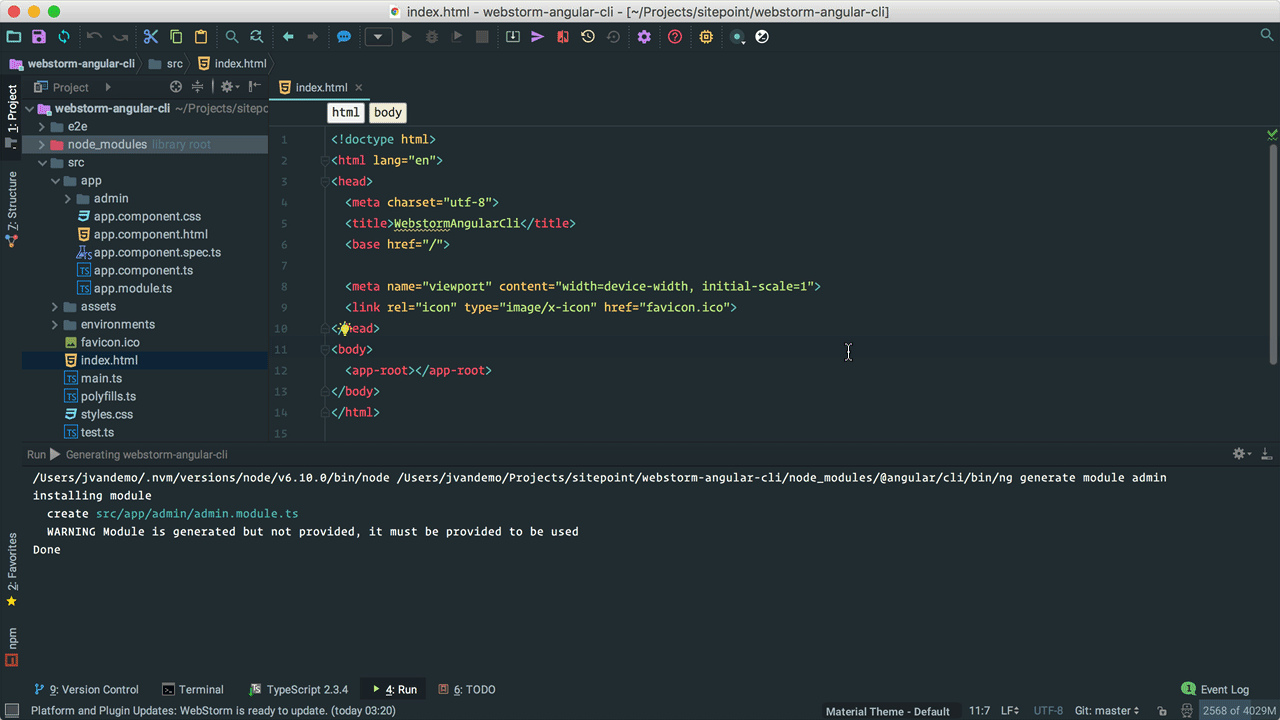
When looking for a file that you don’t have an immediate reference to, hit shift twice to open the Search everywhere dialog. You don’t have to type the entire search string. If you want to open AppComponent, just type the first letter of each part — for example, ac — and WebStorm will immediately narrow down the result list for you, so you can quickly pick the suggestion you wish to open:
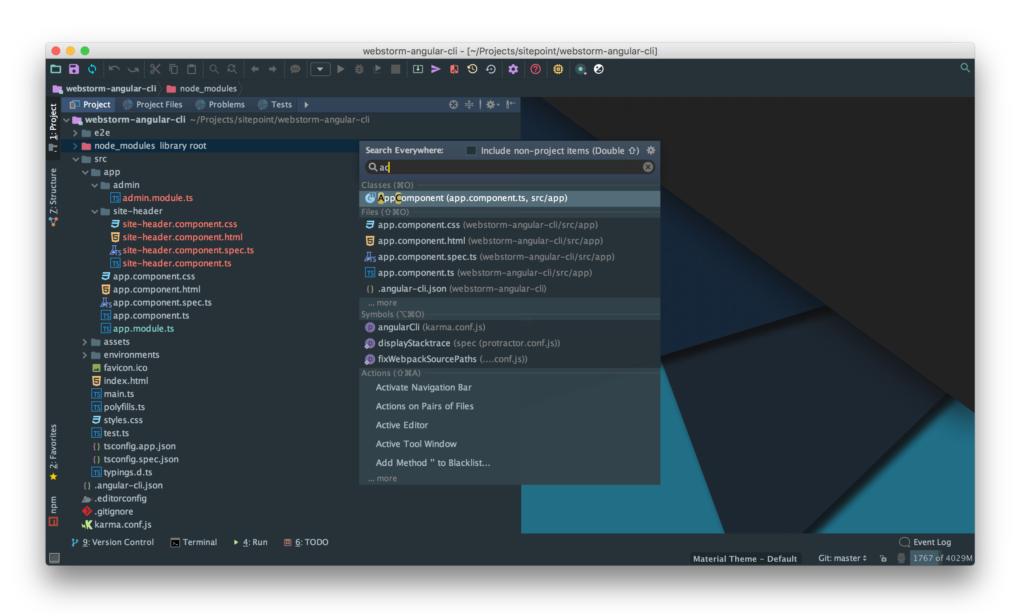
Another super useful navigation shortcut is cmd + E, which presents you with a list of recently edited files so you can easily navigate back and forth between them.
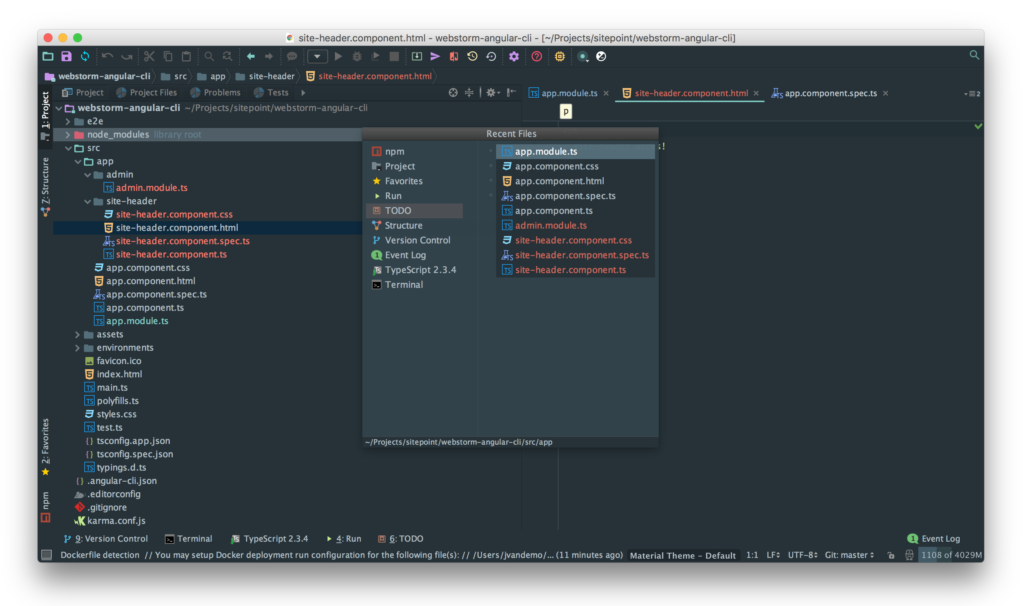
Knowing how to quickly navigate to the code you need will save you a tremendous amount of time every single day.
WebStorm and Angular Tip 3: Take Advantage of Angular Language Service
By default, WebStorm already provides great assistance for writing Angular code.
When editing a script, WebStorm automatically imports the required JavaScript modules so you don’t have to import them manually.
If you open up the TypeScript panel, WebStorm provides you with immediate feedback on the validity of your code, so you can quickly resolve issues before having to compile your project.
Watch how the OnInit interface is automatically imported and how the live TypeScript feedback immediately tells you whether or not your TypeScript code is valid:
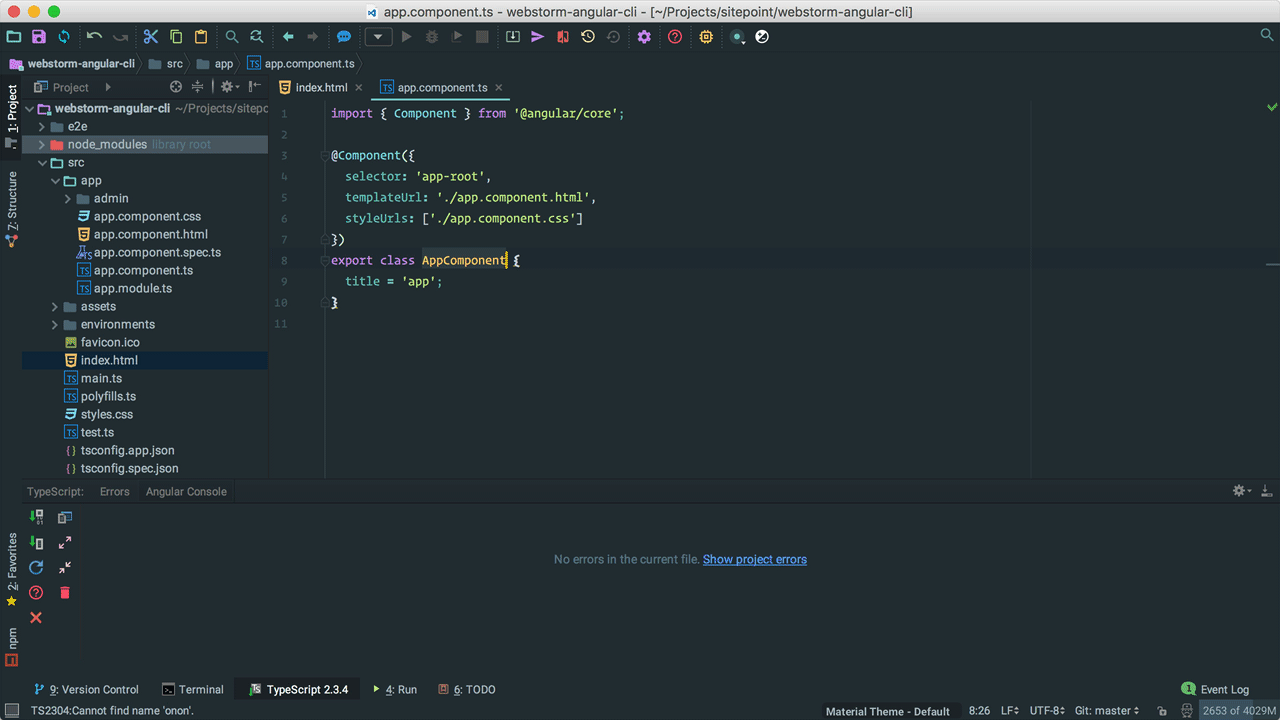
When you edit a template, WebStorm provides you with smart code completion that recognizes components, directives and even input and output properties:

You can take things further by installing the Angular Language Service. This is a service, designed by the Angular Team, to provide IDEs with error checking and type completion within Angular templates.
WebStorm integrates with Angular Language Service to better understand your code. To enable Angular Language Service, first make sure it’s installed:
npm install @angular/language-service --save-dev
If you use Angular CLI to generate an Angular application, Angular Language Service is automatically installed.
Next, go to Preferences > Languages & Frameworks > TypeScript, make sure Use TypeScript Service is checked and click Configure…:
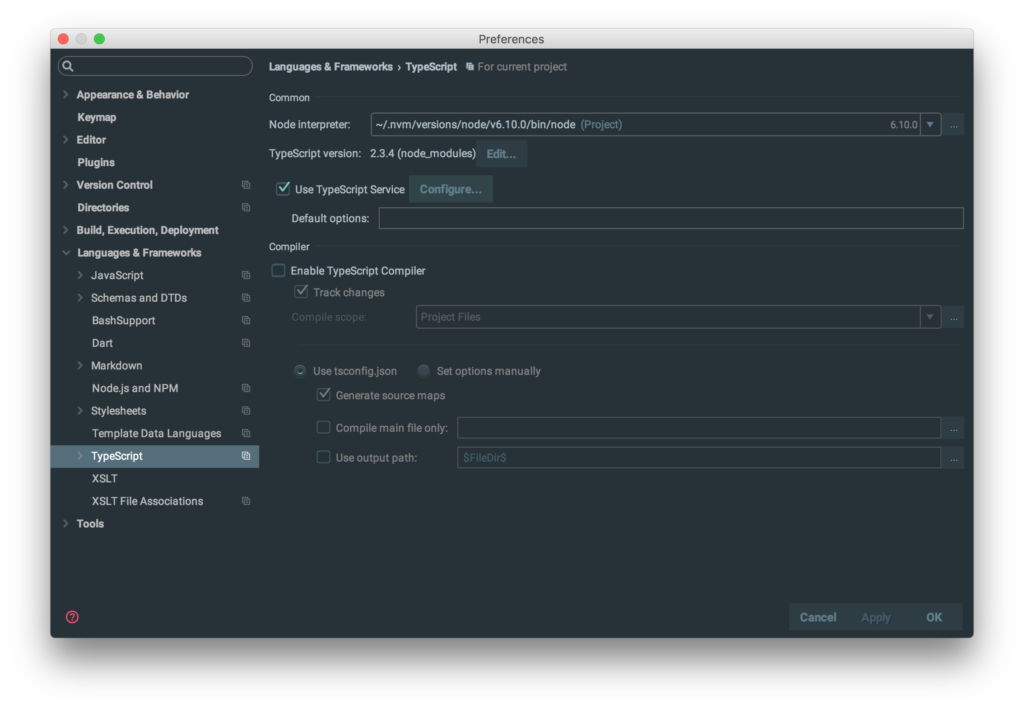
The Service Options modal will pop up. Enable Use Angular service and apply the changes:

With Angular Language Service enabled, WebStorm is able to improve code completion in template expressions:
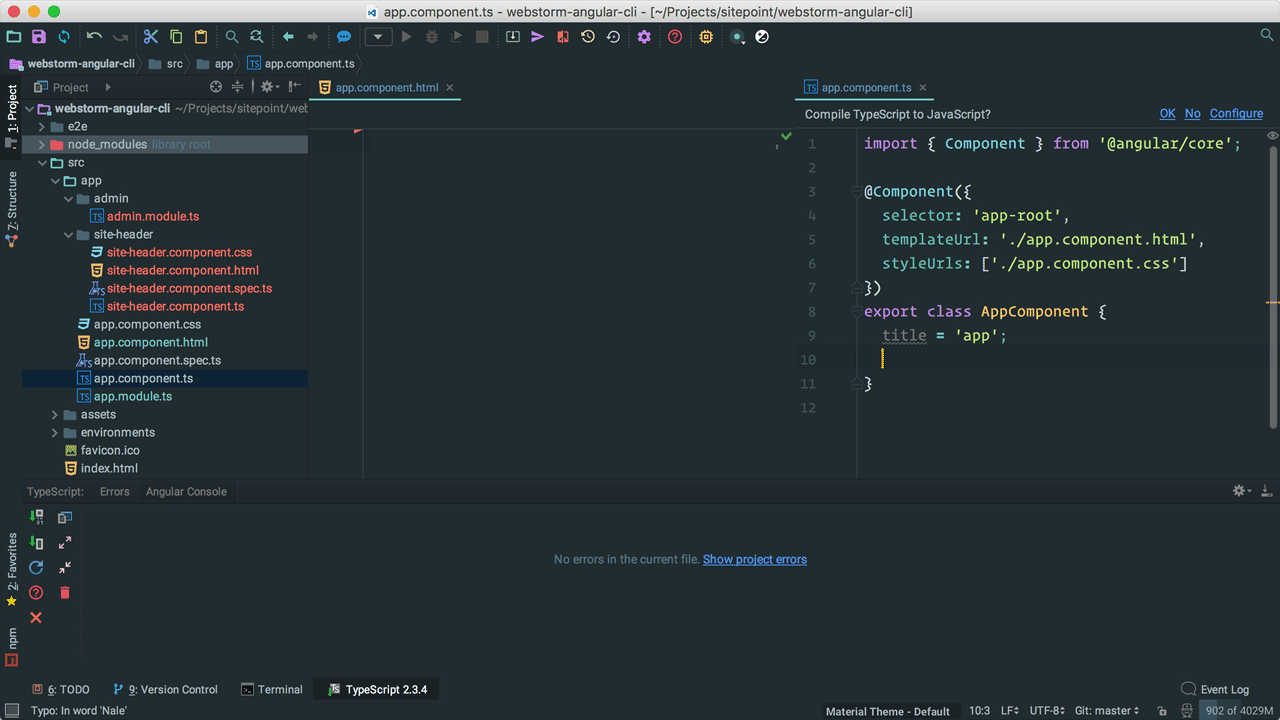
… and report template errors more precisely right inside your editor:
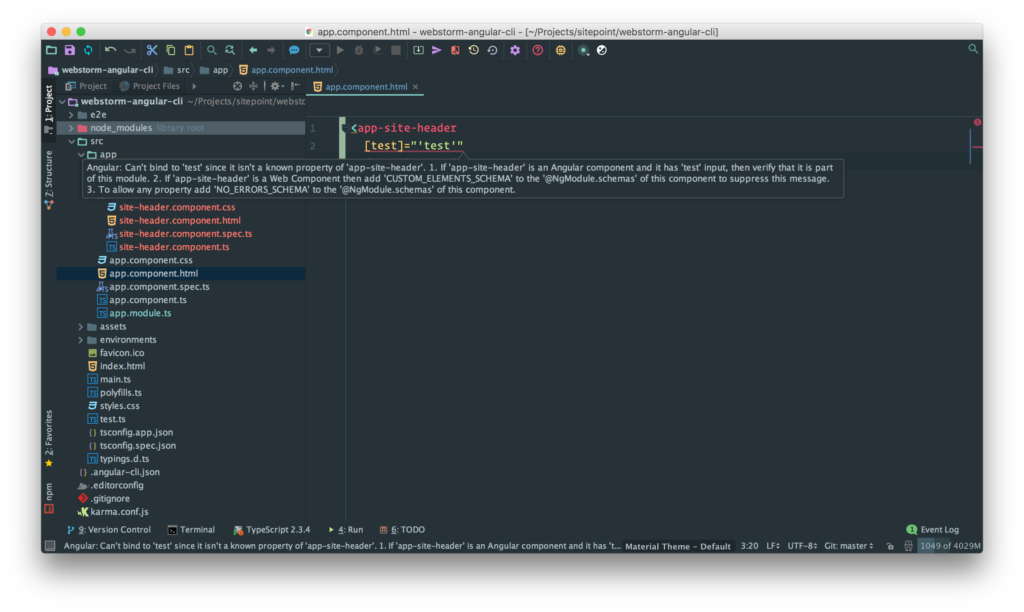
Catching errors without having to compile your project saves you incredible amounts of time.
WebStorm and Angular Tip 4: Auto-format Your Code
Don’t worry about formatting your code manually. WebStorm has you covered.
Whether your’re in a template, a script, a stylesheet or even a JSON file, just hit cmd + option + B and WebStorm will automatically format all code for you:

If your project has a tslint.json file, just open it up and WebStorm will ask you whether you want to apply the code style from TSLint to your project:
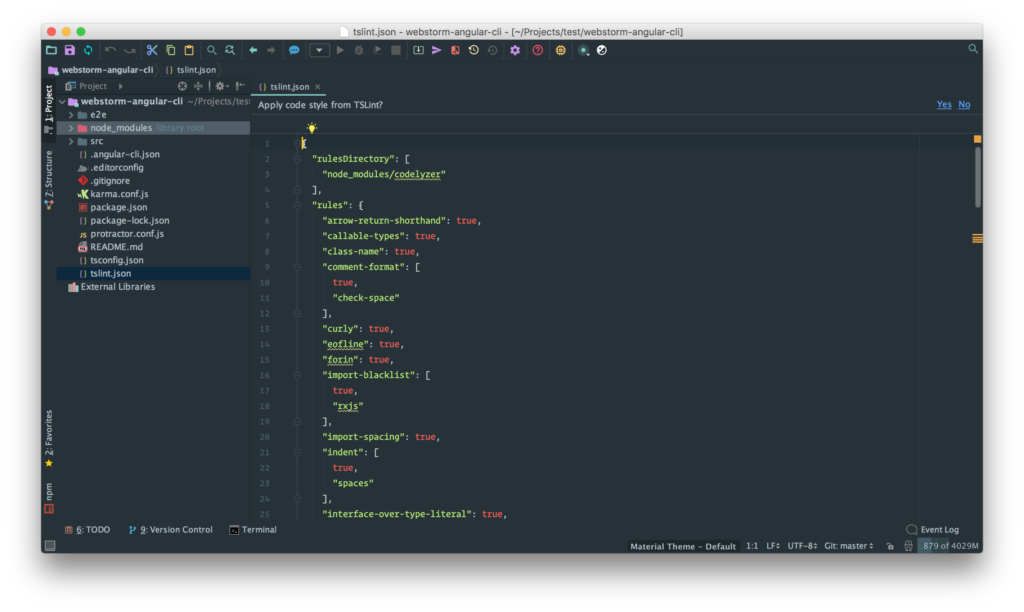
If you’re not happy with the style of the auto-formatted code, you can fine tune the format settings for every supported language separately in Webstorm > Preferences > Editor > Code Style:
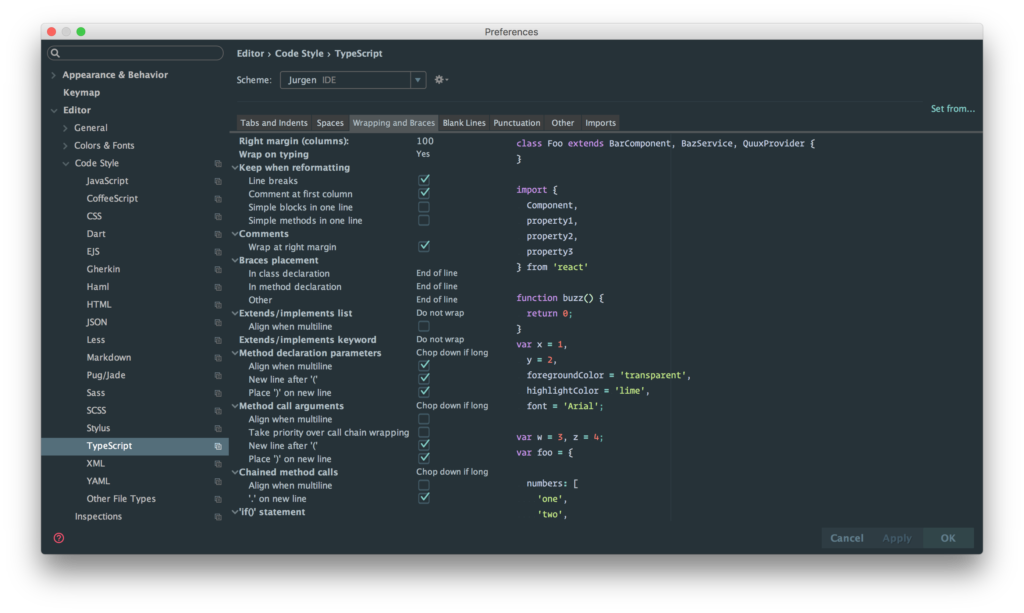
WebStorm’s code formatting feature ensures that your code is formatted properly according to your project settings, so that your code linting checks pass successfully and you can focus on writing code.
WebStorm and Angular Tip 5: Optimize Your Imports
When working on an Angular script, you may find that certain imports are no longer used.
If you don’t remove the unused imports, your bundle size may grow larger than needed. However, removing unused imports can be a real chore. Not with WebStorm!
Hit ctrl + alt O to optimize your imports instantly. Alternatively, you can hit cmd + shift + A to open up the Find actions panel, type optim to find the Optimize imports action and hit the enter key to run the action.
When optimizing imports, WebStorm will do the following for you:
- merge imports from the same module in the same
importstatement - remove unused imports
- reformat import statements so they fit within your desired line length.
In the following example, Optimize imports is run twice. The first time, it merges all imports from @angular/core into one import statement.
Then the OnInit, OnChanges and AfterViewInit interfaces are removed from the code and ctrl + alt + O is pressed again.
This time, Optimize imports automatically removes the unused interfaces from the import statement, because they’re no longer used in the code:
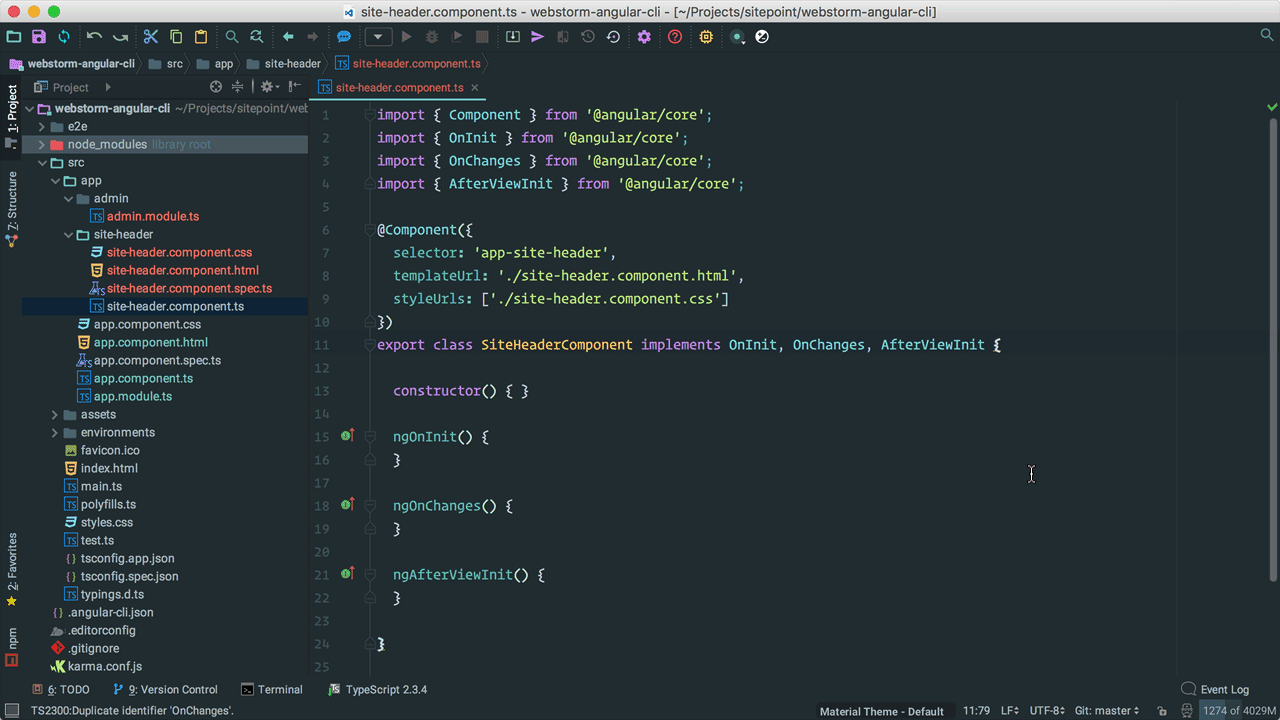
Don’t ever worry about your import statements again. WebStorm is smart enough to handle them for you!
Using WebStorm and Angular Together: Summary
Let’s recap Jurgen’s personal tips for working with WebStorm and Angular to increase Angular development productivity:
- Use Angular CLI from within WebStorm to quickly generate new Angular projects and features
- Navigate like a pro to instantly jump to code definitions and easily locate code or files you are looking for
- Take advantage of Angular Language Service to get even better code completion and error checking without compiling your Angular project
- Auto-format your code to let WebStorm format all your code according to your project settings
- Optimize your imports to ensure all unused imports are removed and your generated bundle size remains optimal.
In the next part, Todd Motto shares his favorite tips for working with WebStorm and Angular too. Be sure to check it out!


